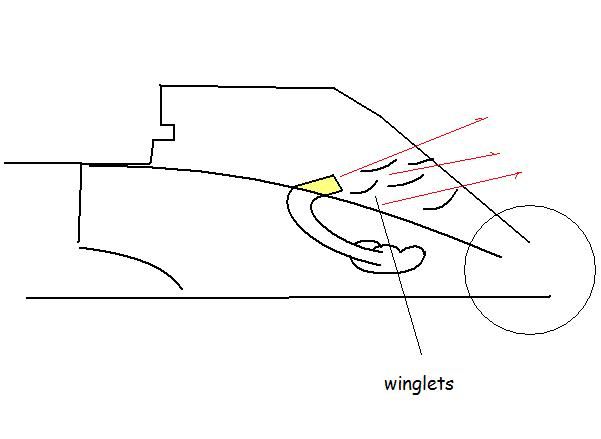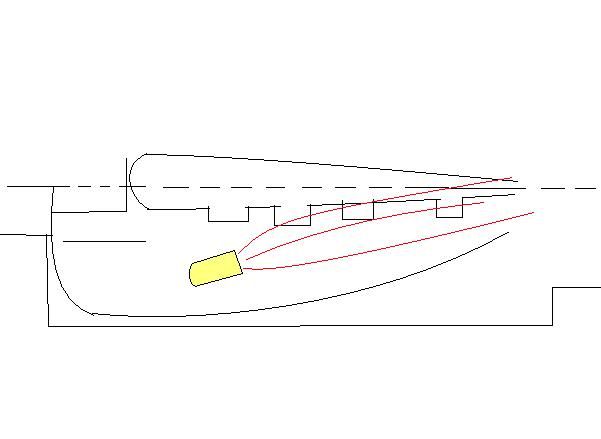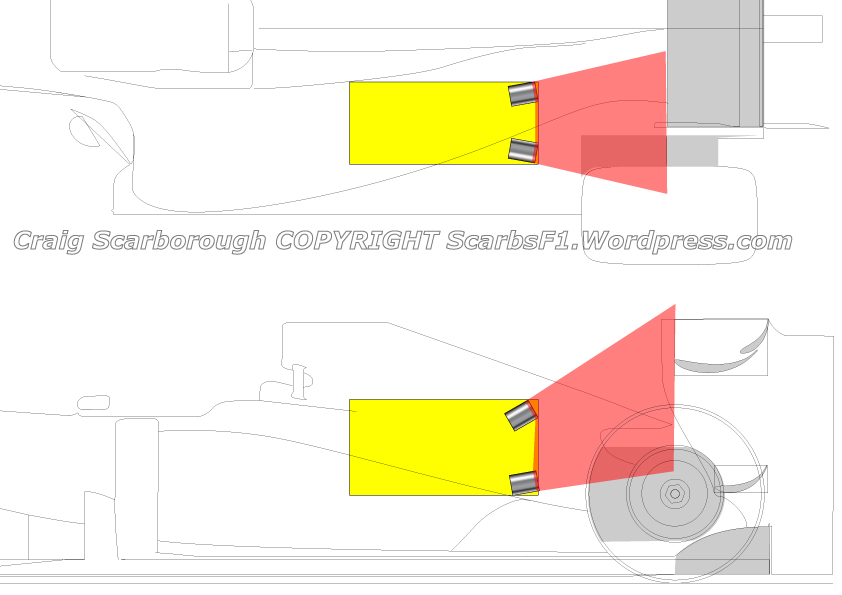- Login or Register
No account yet? Sign up



5.8.4 Once the exhaust tailpipes, the bodywork required by Article 3.8.4 and any apertures
permitted by Article 3.8.5 have been fully defined there must be no bodywork lying within a
right circular truncated cone which :
a) Shares a common axis with that of the last 100mm of the tailpipe.
b) Has a forward diameter equal to that of each exhaust exit.
c) Starts at the exit of the tailpipe and extends rearwards as far as the rear wheel centre
line.
d) Has a half‐cone angle of 3° such that the cone has its larger diameter at the rear wheel
centre line.
Furthermore, there must be a view from above, the side, or any intermediate angle
perpendicular to the car centre line, from which the truncated cone is not obscured by any
bodywork lying more than 50mm forward of the rear wheel centre line.

There is CFD prove it, a spanish Uni did a paper on just that. Google for tech papers 'jet in cross flow' or there might be alink in my blog on 2012 exhausts.MIKEY_! wrote:True but (although there's no CFD to prove it) it seems not to be the optimal solution.
I would expect this has a lot to do with McLaren's rumored "revolutionary rear wing".scarbs wrote:There is CFD prove it, a spanish Uni did a paper on just that. Google for tech papers 'jet in cross flow' or there might be alink in my blog on 2012 exhausts.MIKEY_! wrote:True but (although there's no CFD to prove it) it seems not to be the optimal solution.
BTW the exhaust is unlikely to blow the beam wing (too low) but the mini wing above the gearbox might be able to be blown.
As I remember, one of the big problems with the engine-cover mounted wing on the MP4/10 was that they had to drop a heavy metal pole down through the engine cover in order to support the aerodynamic load. Naturally, this affected the COG and internal packaging, as well as making it more difficult to change the bodywork.Coefficient wrote:I can't see that blowing the engine cover bodywork would achieve much. I don't know if any of you have ever touched an F1 engine cover but they aren't the stiffest things in the world. They aren't structural and they aren't load bearing either so they're engineered to be light and as such quite flexible. Any downforce generated on this kind of surface would lose its potency as the material flexed and deformed.

I was referring to this from a few posts before.shelly wrote: The idea that at thgh speed the exhaust jet would jet defelcted and no more interact with the mainplane is IMO the most interesting point (avoiding draggy behaviour at high speed).
